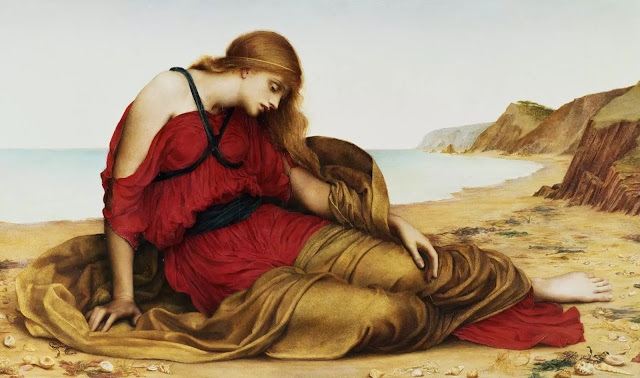Ariadne
The betrayed daughter of King Minos who helped Theseus defeat the Minotaur but was abandoned on Naxos.

The daughter of the king of Crete Minos and Pasiphae, Ariadne played a key role in the killing of the Minotaur by the hero of Athens, Theseus. However, although he promised to marry her, Theseus later abandoned Ariadne on the island of Naxos.
Theseus arrived in Crete as one of the 14 young men and women who were sent by Athens every year as a blood tax for the murder of a Cretan prince. All of them became a sacrifice in the Minotaur. This monster, half a man and half a bull, was the result of the unnatural pairing of Pasiphae with the white bull of god Neptune. He was kept hidden in a palace with complex corridors and hidden rooms, called the Labyrinth that was built by the architect Daedalus. None of the young victims ever managed to kill the Minotaur or escape from the Labyrinth.

Ariadne had a plan. When Ariadne saw Theseus, who had just arrived in Crete, she fell in love with him. She promised him to show him the way out of the Labyrinth if he agreed to marry her and take her back to Athens. Theseus agreed, and Ariadne gave him a string of twine (or golden thread) that Daedalus had given her. Having tied one end of the skein to the entrance of the Labyrinth, he began to unravel it as he walked through the corridors. Thus Theseus could follow the path to the exit if he managed to kill the Minotaur.
When he finally came out, Ariadne led Theseus and the other Athenian survivors to the harbor where they boarded his ship and sail for Athens. At this point there are various versions of the myth about the continuity of the story. In the most widespread version, the Athenian ship arrived on the island of Naxos, where Ariadne fell asleep on the beach. Theseus with his companions sailed away, leaving her there. When Ariadne woke up, she found herself abandoned by her beloved, for whom she had betrayed her homeland and her family. However, Dionysus, the god of wine, had fallen in love with her and descended from his palace to take her as a wife.
Another version of the myth says that Dionysus himself ordered Theseus to leave Ariadne, since the god had chosen her to be his bride. Other variations of the story say that Ariadne despaired so much when she realized she was alone, that she was hanged. Another version of the story reports that Theseus and pregnant Ariadne were led in a tornado in Cyprus, where she eventually died during childbirth.

The story of Ariadne and Theseus portrays the process in which Athens was liberated from Crete, which in 1200 BC was The leading power throughout the Mediterranean. Athenian Theseus puts an end to tax demands and earns the princess for his bride as a prize.
Ariadne itself, whose name derives from the words "aria" and "agne", that is, very pure or very pleasant, for a time was worshiped as the goddess of fertility in Crete and the Eastern Mediterranean. Its association with Bacchus (Dionysus), which was not only a god of wine, but also of dance, entertainment and abundance, seems to link the early Eastern with the later deities of renewal and fertility. A circle dance about the fertility that Theseus leads, is described in the "DIMON" hymn of Kallimachus, written in the 3rd century BC. And Ariadne may be leading such a dance on Crete, on a labyrinth floor that was built by Daidalos for this reason.